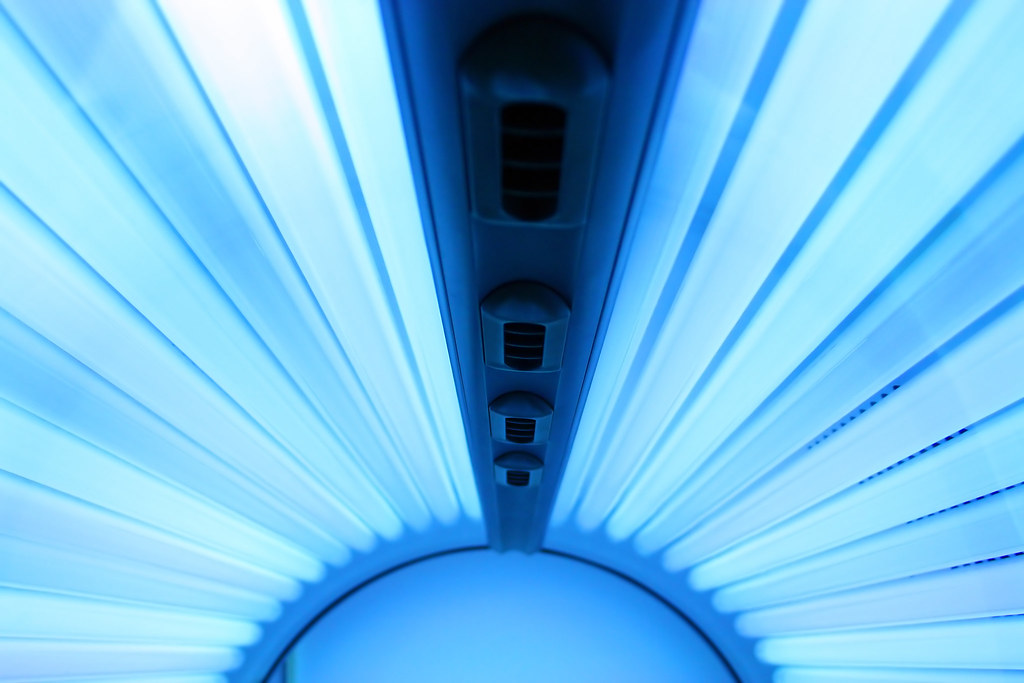The quest for a beautifully bronzed skin often leads individuals to the doors of tanning salons. Tanning beds offer a quick and convenient method to achieve a sun-kissed glow. However, the frequently asked question is: Are Tanning Beds Safe In Moderation? This comprehensive article aims to delve into the various facets of this query, shedding light on the safety, pros, cons, and potential health risks associated with tanning beds.
Understanding Tanning Beds
Tanning beds, also known as sunbeds or tanning booths, are devices that emit ultraviolet radiation (UV) to produce a cosmetic tan. They are equipped with several fluorescent lamps, typically ranging from 100 to 140-watt bulbs, that emit UVA rays, which are capable of penetrating the skin at a deeper level than natural sunlight. This deeper penetration is what produces the desired tan but also raises certain health concerns.
SEE ALSO: How Much Does a Tanning Bed Cost?
How Tanning Beds Work
Tanning beds and booths mimic the sun’s UVA rays, stimulating the melanocytes in the skin. These cells are responsible for skin pigmentation. When stimulated, they produce more melanin, which darkens the skin color, creating a tan. This process indicates that the skin has been damaged and is attempting to prevent further injury.
Tanning Beds and Skin Cancer Risk
One of the major health risks associated with tanning beds is skin cancer. Both natural sunlight and artificial UV radiation from tanning beds can cause DNA damage in skin cells, leading to skin cancer over time. Tanning beds, in particular, emit UVA rays that are 10 to 15 times more powerful than the sun, hence increasing the risk of skin cancer.
Studies and Statistics
Numerous studies have shown a clear link between tanning bed use and an increased risk of skin cancer. According to the International Agency for Research on Cancer (IARC) and the U.S. Department of Health and Human Services, tanning beds are categorized as carcinogenic, meaning they can cause cancer.
A single tanning bed session before age 35 can increase the risk of melanoma, the most severe form of skin cancer, by 75%. This risk continues to increase with each additional tanning session. A study published in the Journal of the American Academy of Dermatology found that regular tanning bed use was associated with a 58% increase in the risk of squamous cell carcinoma and a 20% increase in the risk of basal cell carcinoma.
Tanning Beds versus Sun: Which is Safer?
Many people believe that tanning beds are safer than natural sunlight. However, this is a common misconception. Tanning beds emit UVA rays that are 2-3 times stronger than the sun’s rays. This higher intensity of radiation makes tanning beds potentially more harmful than the sun.
Is Moderate Use of Tanning Beds Safe?
Although some people argue that moderate use of tanning beds might be safe, various health organizations, including the World Health Organization (WHO), strongly advise against this practice. Any exposure to UV radiation, irrespective of whether it’s from the sun or artificially produced, can increase the risk of skin cancer. Thus, even moderate usage of tanning beds is not considered safe.
The Immediate and Long-term Effects of Tanning Beds
Tanning beds can cause both immediate and long-term effects on the skin. In the short term, users may experience symptoms such as itching, dryness, redness, freckling, and photosensitivity. In the long term, frequent tanning bed use can lead to premature aging of the skin, including sagging, wrinkling, and the development of dark age spots.
Safe Alternatives to Tanning Beds
For individuals who desire a tanned look, there are safer alternatives to tanning beds. Sunless tanning products, such as self-tanning sprays or lotions, can provide a similar bronzed effect without the associated health risks. These products work by interacting with the proteins in the skin to produce a brown color. However, it’s important to note that these products do not offer any protection against the sun’s harmful rays, so sunscreen use is still vital.
The Bottom Line
Tanning beds, even when used in moderation, pose significant health risks. The pursuit of a bronzed hue should not come at the cost of one’s health. Opting for safer alternatives, like sunless tanning products, and practicing good sun protection habits, such as wearing sunscreen and protective clothing, can help maintain healthy skin while still achieving the desired tan.
In conclusion, the answer to the question, Are Tanning Beds Safe In Moderation? is a resounding no. The potential risks far outweigh the aesthetic benefits. It’s crucial to prioritize our health above all and opt for safer alternatives for that sun-kissed glow.







